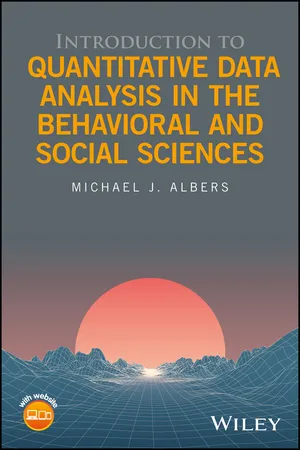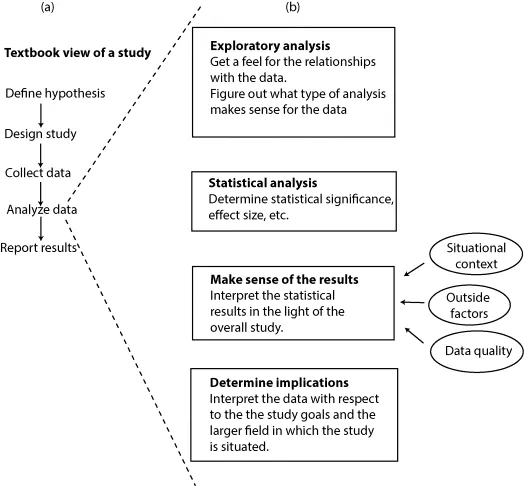
Introduction to Quantitative Data Analysis in the Behavioral and Social Sciences
- English
- ePUB (mobile friendly)
- Available on iOS & Android
Introduction to Quantitative Data Analysis in the Behavioral and Social Sciences
About This Book
Guides readers through the quantitative data analysis process including contextualizing data within a research situation, connecting data to the appropriate statistical tests, and drawing valid conclusions
Introduction to Quantitative Data Analysis in the Behavioral and Social Sciences presents a clear and accessible introduction to the basics of quantitative data analysis and focuses on how to use statistical tests as a key tool for analyzing research data. The book presents the entire data analysis process as a cyclical, multiphase process and addresses the processes of exploratory analysis, decision-making for performing parametric or nonparametric analysis, and practical significance determination. In addition, the author details how data analysis is used to reveal the underlying patterns and relationships between the variables and connects those trends to the data's contextual situation.
Filling the gap in quantitative data analysis literature, this book teaches the methods and thought processes behind data analysis, rather than how to perform the study itself or how to perform individual statistical tests. With a clear and conversational style, readers are provided with a better understanding of the overall structure and methodology behind performing a data analysis as well as the needed techniques to make informed, meaningful decisions during data analysis. The book features numerous data analysis examples in order to emphasize the decision and thought processes that are best followed, and self-contained sections throughout separate the statistical data analysis from the detailed discussion of the concepts allowing readers to reference a specific section of the book for immediate solutions to problems and/or applications. Introduction to Quantitative Data Analysis in the Behavioral and Social Sciences also features coverage of the following:
• The overall methodology and research mind-set for how to approach quantitative data analysis and how to use statistics tests as part of research data analysis
• A comprehensive understanding of the data, its connection to a research situation, and the most appropriate statistical tests for the data
• Numerous data analysis problems and worked-out examples to illustrate the decision and thought processes that reveal underlying patterns and trends
• Detailed examples of the main concepts to aid readers in gaining the needed skills to perform a full analysis of research problems
• A conversational tone to effectively introduce readers to the basics of how to perform data analysis as well as make meaningful decisions during data analysis
Introduction to Quantitative Data Analysis in the Behavioral and Social Sciences is an ideal textbook for upper-undergraduate and graduate-level research method courses in the behavioral and social sciences, statistics, and engineering. This book is also an appropriate reference for practitioners who require a review of quantitative research methods.
Michael J. Albers, Ph.D., is Professor in the Department of English at East Carolina University. His research interests include information design with a focus on answering real-world questions, the presentation of complex information, and human–information interaction. Dr. Albers received his Ph.D. in Technical Communication and Rhetoric from Texas Tech University.
Frequently asked questions
Information
1
Introduction
Basis of How All Quantitative Statistical Based Research

- Graphs of checkouts by month of the various categories. Do the types of categories vary by day/week through the month? How do the numbers compare? Do the trends of checkouts for each category look the same or different?
- Run statistics on the daily/month checkouts of the book categories versus demographics of the people who checked them out (age, gender, frequency of library use, etc.). Does age or gender matter for who checks out a romance versus a thriller. From this we can find whether there is a statistically significant difference (e.g., that older readers read more romance than younger readers).
Data Analysis, Not Statistical Analysis
Use Dedicated Statistical Software
Table of contents
- Cover
- Title Page
- Copyright
- Preface
- About the Companion Website
- Chapter 1: Introduction
- Part I: Data Analysis Approaches
- Part II: Data Analysis Examples
- Appendix A: Research Terminology
- Index
- End User License Agreement